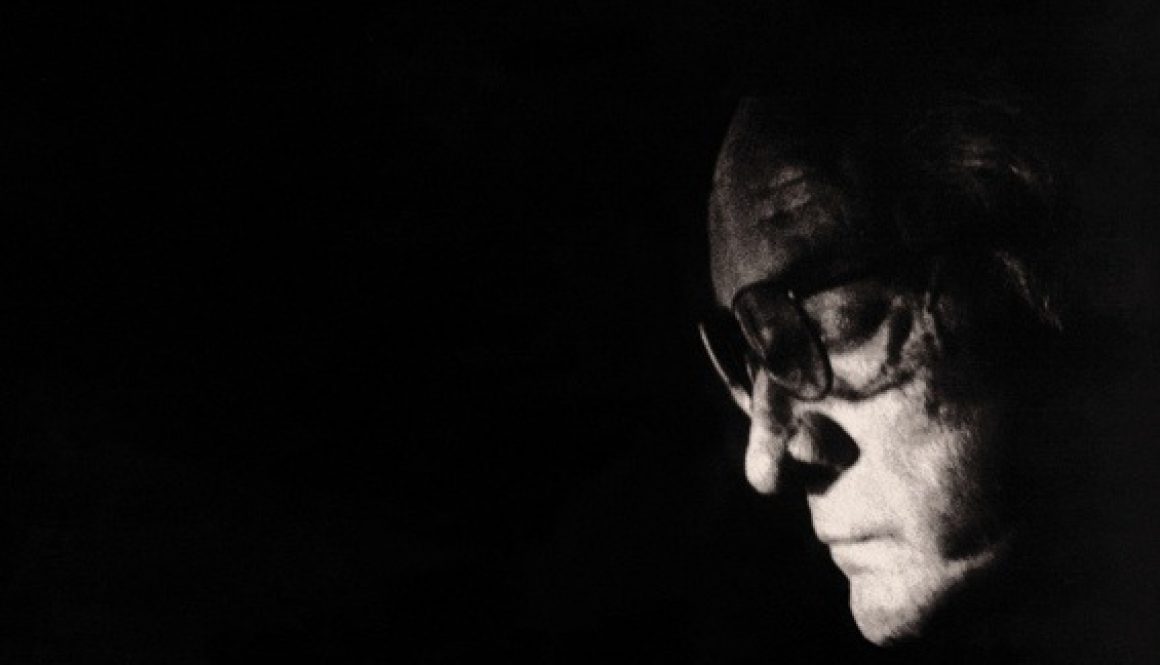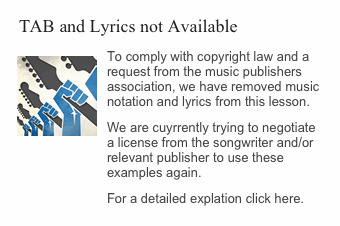Hurt – Johnny Cash

Strange as it might seem to be discussing in music, there is a power in silence and in sparseness that should always be taken into consideration when making arrangements of songs. A little understatement, whether with lyrics or music, can go a long way. And perhaps no one used this to greater effect than Johnny Cash.
While he will be well remembered as both performer and songwriter, Mr. Cash also had a gift for knowing great songs and a tremendous talent to tailor those songs to his unique abilities. A song’s genre wasn’t as important to him as its emotional impact. On his last studio album, American IV: The Man Comes Around, he covered artists as diverse as Paul Simon and Trent Reznor of Nine Inch Nails. And today, we’ll be taking a look at his arrangement of Reznor’s haunting song Hurt and making our own adaptation for the single guitar.
These files are the author’s own work and represent his interpretation of this song. They are intended solely for private study, scholarship or research.
In terms of structure, Hurt is your basic verse, chorus, verse, chorus song with a short extension of the chorus tacked on to the end. The verses consist of two measures, which are repeated almost like a loop. Here is our chord progression for the verses:
As I mentioned in the opening paragraph, we’re going to concentrate on the atmosphere of this song – making it intense by keeping things sparse. The pattern of the verse keeps things simple. We start by fingering an Am chord and then playing just the open A string followed by the E note (second fret of the D string) follow by a downstroke of the remaining strings of the chord, which we’ll let ring through the end of this measure. In order to let all these chords ring as long as possible, keep your fingers in their position until you’re ready to move on to the next one. Speaking of which…
The second measure repeats this rhythmic motif of two eighth notes followed by a chord. But our chords (C and Dsus2) are now only a quarter note in length. We want to fit both of these chords in one bar after all! The Dsus2, by the way, I’ve seen called other things on various TABs throughout the internet. We’ll stick with this label if you don’t mind. In case you need a refresher, “sus” means “suspended.” We’ve replace the third of the chord (which would be F# in a D major chord and F in a D minor chord) with the second, which is E. You can read more about these chords (and others) in the column “Building Additions (and Suspensions).”
This is a fairly dissonant chord, as you can hear. When we finally begin the Am chord again, it’s almost an audible sigh of relief even though the song’s overall tone is still one of sadness. And that’s precisely what we’re looking for – a sort of resignation that things are messed up beyond all control and there’s not a lot, if anything, one can do about it.
At the final line of the verses, we end with the G chord instead of the Am. This signals the beginning of the chorus. If you’re familiar with Cash’s version (or if you’ve seen the video, which I think won an MTV award), you know that the chorus, while still sparse, is nonetheless moving and urgent. Part of this is owing to his pounding on the G note on the piano over and over again, almost like driving a nail through a board.
What I have tried to do in our arrangement of this song is to combine the guitar and piano parts. We can do this by keeping the G on the high E (first) string throughout each chord change. This use of a sustained tone creates a lot of tension and release (and you can read more about them here in Sustained Tones: An Animated Discussion). Let’s take a look and have a listen to our chorus:
As you can see in the chord chart and on the TAB, we’re going to use a slightly different voicing of our G chord, one that adds the D note on the third fret of the B string. I find the best way to finger this is using your pinky (the smallest finger) on the first string, your ring finger on the B, your index finger on the A (fifth) string and then finally your middle finger on the low E (sixth) string. I have to warn you that your pinky is in for a workout!
On the strumming, I think you’re going to find this the easiest thing we’ve done yet! I use three straight quarter notes done as downstrokes followed by two eighth notes on the fourth beat. This is a quick down-and-up stroke and you’ll see that I’ve marked the final eighth note (the upstroke) with “x’s” as if it’s a palm mute. When you listen to the MP3, you can hear that it’s not quite a palm mute and yet it’s definitely not a chord. What’s going on? This is where I’m changing my chords! Depending on the chord, and how I’m doing the change, I may get a few of the notes or I may get more of that palm muted sound, but I’m almost always going to get that G note. Pretty sneaky, no? Taking this much time on the change will also assure that I have my next chord in place for the upcoming measure.
Keep your pinky and ring finger in place while changing from the G to A7sus4 and cover the notes on the second fret (on the G and D strings) with either both of the other fingers or with one finger barred across the first four strings. I’ve seen some TABs with a straight A7 (X02223) but I prefer using the D note (the “sus4” part of the chord) to create more dissonance.
To go from the A7sus4 to the Fadd9, just move your ring finger down to the third fret of the D string and place your index finger one the first fret of the B string and your middle finger on the second fret of the G string. Then congratulate yourself. You’ve done the hardest part of the song! Changing from Fadd9 to this particular voicing of C requires you to merely move your ring and middle fingers down a string. The middle finger stays on the second fret while slipping from the G string to the D and the ring finger goes from the D string to the A. Then all you’ve got to do is get back to your original G and you’re reading to recycle the progression.
As I mention in the MP3, dynamics are important to this song and particularly in the chorus. Because the verses are so quiet and sparse, it’s easy to succumb to the temptation of wailing away on the chorus from the get-go. But if you start out at full volume, you’ll find you have nowhere to go!
This is where our arrangement can help you out. By keeping things sparse you can gradually increase the force of your downstrokes, building the tone into more of a frenzy with each measure.
By the time we’ve reached the final line of the chorus, you should feel like you can’t keep from exploding. And that’s just when, of course, we abruptly downshift back into the verse. Fortunately we go from the C to the Am, so it doesn’t take a lot of finger motion. Also remember that we’re going to start with two single notes (open A and E on the second fret of the D, which is already in place and how’s that for planning!) so you’ve got plenty of time to gather yourself together again:
The second time through the chorus is slightly different. The A7sus4, Fadd9, C and G progression is extended through an additional two lines. But because you haven’t begun the chorus with your volume at “eleven,” you’ve still got enough headroom to make this all very dramatic. Even more so when you just hold the final C chord and simply sing the last line while that chord trails off:
And that’s the song, folks. Let me write it all out for you here:
I hope you had fun with this lesson and have fun with this song. If you take anything away from all of this, I hope that it’s a sense of the importance of dynamics and how you can achieve a lot by keeping things simple. Think of each song you do as a little performance within a bigger one. Using a little thought in how you present each song can make you a more interesting performer. After all, you may not have a huge light and laser show to cart around with you! Let the songs work for you instead of going through the motions.
As always, please feel free to write in with any questions, comments, concerns or songs (and/or riffs and solos) you’d like to see discussed in future pieces. You can either drop off a note at the Guitar Forums or email me directly at [email protected]
Until next lesson…
Peace
On February 11, 2010 we received a letter from lawyers representing the NMPA and the MPA instructing us to remove guitar tab and lyrics from this page. You can read more about their complaint here. Alternatively, you can still find this complete article with tab and lyrics archived here.


Randy Cockastua
June 16th, 2016 @ 12:54 am
I believe
Randy Cockastua
June 16th, 2016 @ 12:54 am
I just wanted to point out that Johnny Cash sang Hurt before the nine inch nails
David
March 7th, 2012 @ 4:06 am
Hello.
I’m glad to learn that you won your battle with the legal people regarding the TAB on your website.
Could you please put the TAB for HURT (johnny Cash) back in place. I’ve been trying to learn this song with just the text and the sound files, but TAB would simplify things alot.
All the best
David
David Hodge
March 7th, 2012 @ 6:57 am
Hello David
Thank you for writing. As far as “winning our battle,” that’s really not what the whole copyright situation is all about – it’s about legal purchasing the rights to use these songs as lessons here at the Guitar Noise website. What you may not understand is that we don’t have permission to use all the song lessons just yet. We have to negotiate, and then pay for, the use of the copyrighted material on a song by song basis. Getting all the old song lessons back may not ever happen. It’s totally possible, for example, for us to get permission from the publishers and then not get permission from the songwriter!
As of right now, especially since we still want Guitar Noise to be a totally free website, we’re on a pace to get one old song lesson back per month. The next one, I beleive, will be “Margaritaville” and that should go up online around the first of April.
I hope this helps and I also hope it clears things up concerning the copyrighted material. It’s taken us a long time to work out the deals we’ve gotten so far and we plan to do our best to continue working with the various publishing houses to put more (hopefully most!) of our old lessons back online. And we’re also hoping to have totally new ones as well, in the very near future.
Please feel free to post here or to email me directly ([email protected]) with any further questions you may have. I look forward to chatting with you again.
Peace